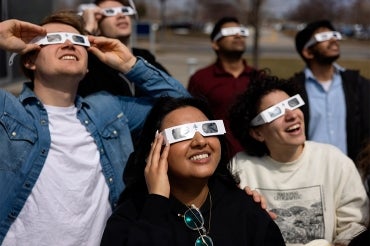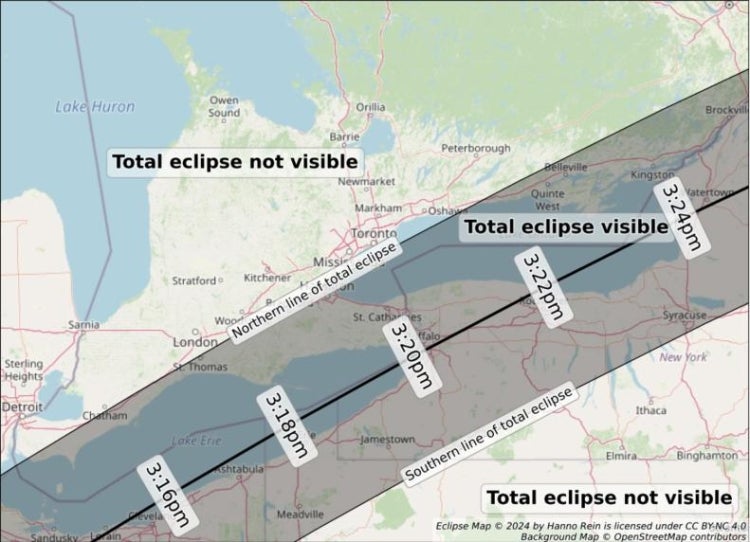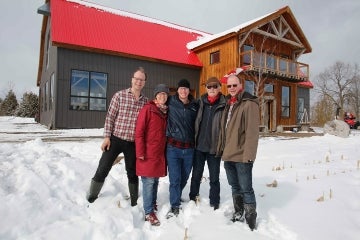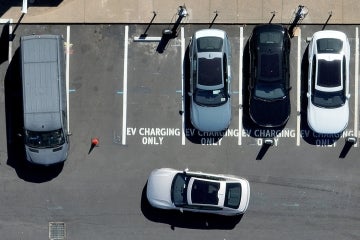U of T astrophysicist offers tips for enjoying April 8 solar eclipse

Special eclipse glasses are a must for looking safely at the sun – particularly in Toronto, which will be just outside the path of the total eclipse on April 8 (photo by Don Campbell)
Published: April 1, 2024
Being in the path of a total solar eclipse is rare. Since it’s only visible across a thin stretch of the Earth’s surface, it only happens once every 375 years on average.
While Toronto will only get a partial eclipse on April 8, a total eclipse will be viewable just a short distance from the city.
“If you have the chance to take the day off to go and see it, I strongly encourage you to do so,” says Hanno Rein, an astrophysicist at the University of Toronto. “It's a rare event and it's worth it.”
Writer Don Campbell spoke to Rein, an associate professor in the department of physical and environmental sciences at U of T Scarborough, for his advice on the best locations to watch the total eclipse, tips for safe viewing and why it promises to be a memorable event for millions.
Why do you think we are so captivated by a solar eclipse?
The rarity of an eclipse makes it very special. Beyond that, it'll be completely dark in the middle of the day. If that is not captivating, I'm not sure what is!
What can those in Toronto expect to see on April 8?
Toronto will only get a partial eclipse, which is still very exciting – but it’s very different from seeing a total eclipse. Even one per cent of sunlight is still very bright so you won’t see prominences in the sun's corona, which are the loops of plasma that extend out from its surface, or stars in the sky.
If you want to see a total eclipse in Toronto, you will be out of luck. The next one takes place in 2144.
Where can we view a total eclipse?
If you live in Toronto, you will need to travel. Burlington is the first city south-west of Toronto where you can see the total eclipse for a few seconds. The further you travel towards the central line of the total eclipse, the longer you will be able to experience it. Buffalo is almost exactly on the central line and totality will last there for about four minutes.
Port Hope is the first town east of Toronto where you can see the total eclipse for a few seconds. In Kingston you can see the total eclipse for about two minutes. If you make it across the border to Watertown, N.Y., by 3:25 p.m., then you will experience a total eclipse for about four minutes.
I’ve made a map that shows where and when the eclipse shadow will take place over the GTA. I also created a free app that calculates accurate timing of the eclipse and what it will look like based on your location.

What should we do to safely view the eclipse?
Do not look directly at the sun. I can’t emphasize that enough. You can do permanent damage to your eyes if you do. If you’re in Toronto, you will need eclipse glasses at all times to safely look at the sun. Sunglasses, even if they are very dark, or other home-made filters, are not safe.
Some places, like the Toronto Public Library, are handing out glasses for free. At U of T Scarborough, we handed out 1,000 pairs over the past month to students, staff and faculty, but unfortunately, we are all out. You can also buy glasses online, but make sure not to get ripped off. Glasses selling for more than $3 or $4 per pair are a scam.
Do you have any other tips for viewing the eclipse?
I recommend not taking pictures during the eclipse because it will be over quickly. Just relax and enjoy the experience. There will be millions of people taking photos and many people will be using fancy camera gear, so there will be plenty of photos online to appreciate afterwards.
Be sure to check the forecast. You might be able to travel to an area with no clouds. For this time of year in the GTA there is a 60 to 70 per cent chance of cloud coverage. If there are clouds, it will still get very dark, but you won’t see the corona (outermost part of the atmosphere around the sun) during totality, which is disappointing.
Roads and public transit will likely be very busy, so pack some drinks and food and head out before sunrise to beat the traffic. Try not to stand on a busy road because drivers will be distracted during the eclipse. It’s also possible that streetlights might turn on, so try to find an area where there are no streetlights.



